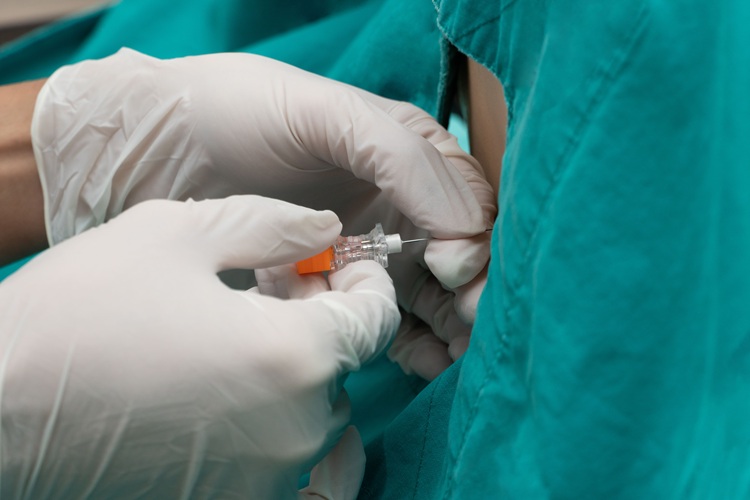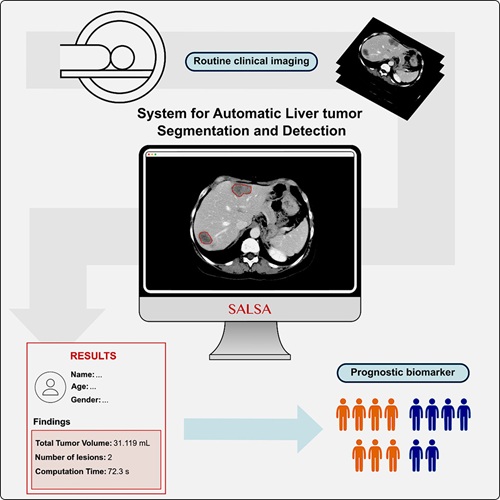GE Healthcare and University Partner to Advance Next Frontier in Diagnostic Imaging and Radiology
|
By MedImaging International staff writers Posted on 24 Sep 2012 |
A collaboration has been established to help physicians inform patients in advance if cancer treatment will work for them, without going through an entire course of chemotherapy.
The University of Wisconsin (UW) School of Medicine and Public Health (Madison, USA), GE Healthcare (Chalfont St. Giles, UK), and the Wisconsin Alumni Research Foundation (WARF) announced new agreements focused on bringing that vision to life.
The agreements commemorated more than 30 years of research collaboration and technology invention with an anticipated USD 32.9 million GE investment in a state-of-the-art imaging research facility. The center will be located in the Wisconsin Institutes for Medical Research (WIMR), which is connected to the UW Health Sciences Learning Center and UW Hospital and Clinics.
The 10-year research agreement, under which GE research support is reevaluated and committed annually, comprises GE Healthcare providing up to USD 32.9 million in anticipated research support, including cash funding, diagnostic imaging equipment and research personnel, to support its collaborative research program with UW’s existing departments of Radiology and medical physics, which plans to expand its research activities into additional space in WIMR.
A new patent and technology agreement between GE Healthcare and WARF governs the intellectual property and licensing practices of the research agreement. According to WARF, during the past 11 years collaborations between GE and UW researchers have resulted in nearly 200 invention disclosures, more than 80 filed US patents and numerous licensing agreements and technology improvements.
“Through our collaboration with GE Healthcare, we will have one of the few imaging centers in the world that brings together state-of-the-art diagnostic imaging systems with physicians, engineers, and scientists focused on improving patient care and personalizing medicine, in an environment that is connected to an outstanding academic medical center at UW Hospital,” said Dr. Thomas Grist, chair of the department of radiology at the UW School of Medicine and Public Health. “The center will also be a nexus for the development of new products for GE and other Wisconsin-based start-up companies that arose from research in the departments of radiology and medical physics, like Neuwave, Novellos, and Tomotherapy,” Dr. Grist added.
Tom Gentile, president and CEO, GE Healthcare Systems, GE Healthcare, stated the partnership would have not only a global but also a local impact. “GE Healthcare’s research collaboration with UW-Madison not only will yield significant economic benefits to the state of Wisconsin but it will enable us to partner to create protocols that will fundamentally change clinical care both here and around the world,” Mr. Gentile said. “I am proud of GE’s longstanding relationship with these important thought leaders in medical imaging.”
The agreement ushers in the next frontier of medical and imaging research, according to UW School of Medicine and public health dean Dr. Robert Golden. “The long and productive partnership with GE Healthcare has yielded many advancements in imaging, and we look forward to the next era in research,” said Dr. Golden.
Additional research programs anticipated through the joint UW/GE Healthcare program include: (1) providing ultra-low computed tomography (CT) radiation dose imaging applications for the patient population while maintaining diagnostic quality for clinicians; (2) More deeply linking hybrid imaging modalities such as magnetic resonance imaging (MRI) and positron emission tomography (PET) to both quantify and gauge disease progression; (3) quantification of liver disease for early diagnosis and monitoring of treatment in patients with nonalcoholic fatty liver disease, the most common cause of liver disease; (4) lastly, development of new cardiovascular imaging techniques for noninvasive diagnosis of heart and vascular disease.
While molecular imaging is the next frontier in radiology research, the UW and GE Healthcare have collaborated for more than 30 years and have developed imaging equipment and protocols in use worldwide. The partnership has developed cutting-edge MRI protocols for vascular imaging. Current research in CT is developing new techniques to additionally reduce radiation doses for children and adults to levels lower than even the latest cutting-edge innovations. Low-dose CT protocols are already in place for pediatric imaging at American Family Children’s Hospital (Madison, WI, USA) and adult imaging at UW Hospital and Clinics.
Related Links:
University of Wisconsin School of Medicine and Public Health
GE Healthcare
The University of Wisconsin (UW) School of Medicine and Public Health (Madison, USA), GE Healthcare (Chalfont St. Giles, UK), and the Wisconsin Alumni Research Foundation (WARF) announced new agreements focused on bringing that vision to life.
The agreements commemorated more than 30 years of research collaboration and technology invention with an anticipated USD 32.9 million GE investment in a state-of-the-art imaging research facility. The center will be located in the Wisconsin Institutes for Medical Research (WIMR), which is connected to the UW Health Sciences Learning Center and UW Hospital and Clinics.
The 10-year research agreement, under which GE research support is reevaluated and committed annually, comprises GE Healthcare providing up to USD 32.9 million in anticipated research support, including cash funding, diagnostic imaging equipment and research personnel, to support its collaborative research program with UW’s existing departments of Radiology and medical physics, which plans to expand its research activities into additional space in WIMR.
A new patent and technology agreement between GE Healthcare and WARF governs the intellectual property and licensing practices of the research agreement. According to WARF, during the past 11 years collaborations between GE and UW researchers have resulted in nearly 200 invention disclosures, more than 80 filed US patents and numerous licensing agreements and technology improvements.
“Through our collaboration with GE Healthcare, we will have one of the few imaging centers in the world that brings together state-of-the-art diagnostic imaging systems with physicians, engineers, and scientists focused on improving patient care and personalizing medicine, in an environment that is connected to an outstanding academic medical center at UW Hospital,” said Dr. Thomas Grist, chair of the department of radiology at the UW School of Medicine and Public Health. “The center will also be a nexus for the development of new products for GE and other Wisconsin-based start-up companies that arose from research in the departments of radiology and medical physics, like Neuwave, Novellos, and Tomotherapy,” Dr. Grist added.
Tom Gentile, president and CEO, GE Healthcare Systems, GE Healthcare, stated the partnership would have not only a global but also a local impact. “GE Healthcare’s research collaboration with UW-Madison not only will yield significant economic benefits to the state of Wisconsin but it will enable us to partner to create protocols that will fundamentally change clinical care both here and around the world,” Mr. Gentile said. “I am proud of GE’s longstanding relationship with these important thought leaders in medical imaging.”
The agreement ushers in the next frontier of medical and imaging research, according to UW School of Medicine and public health dean Dr. Robert Golden. “The long and productive partnership with GE Healthcare has yielded many advancements in imaging, and we look forward to the next era in research,” said Dr. Golden.
Additional research programs anticipated through the joint UW/GE Healthcare program include: (1) providing ultra-low computed tomography (CT) radiation dose imaging applications for the patient population while maintaining diagnostic quality for clinicians; (2) More deeply linking hybrid imaging modalities such as magnetic resonance imaging (MRI) and positron emission tomography (PET) to both quantify and gauge disease progression; (3) quantification of liver disease for early diagnosis and monitoring of treatment in patients with nonalcoholic fatty liver disease, the most common cause of liver disease; (4) lastly, development of new cardiovascular imaging techniques for noninvasive diagnosis of heart and vascular disease.
While molecular imaging is the next frontier in radiology research, the UW and GE Healthcare have collaborated for more than 30 years and have developed imaging equipment and protocols in use worldwide. The partnership has developed cutting-edge MRI protocols for vascular imaging. Current research in CT is developing new techniques to additionally reduce radiation doses for children and adults to levels lower than even the latest cutting-edge innovations. Low-dose CT protocols are already in place for pediatric imaging at American Family Children’s Hospital (Madison, WI, USA) and adult imaging at UW Hospital and Clinics.
Related Links:
University of Wisconsin School of Medicine and Public Health
GE Healthcare
Latest Industry News News
- GE HealthCare and NVIDIA Collaboration to Reimagine Diagnostic Imaging
- Patient-Specific 3D-Printed Phantoms Transform CT Imaging
- Siemens and Sectra Collaborate on Enhancing Radiology Workflows
- Bracco Diagnostics and ColoWatch Partner to Expand Availability CRC Screening Tests Using Virtual Colonoscopy
- Mindray Partners with TeleRay to Streamline Ultrasound Delivery
- Philips and Medtronic Partner on Stroke Care
- Siemens and Medtronic Enter into Global Partnership for Advancing Spine Care Imaging Technologies
- RSNA 2024 Technical Exhibits to Showcase Latest Advances in Radiology
- Bracco Collaborates with Arrayus on Microbubble-Assisted Focused Ultrasound Therapy for Pancreatic Cancer
- Innovative Collaboration to Enhance Ischemic Stroke Detection and Elevate Standards in Diagnostic Imaging
- RSNA 2024 Registration Opens
- Microsoft collaborates with Leading Academic Medical Systems to Advance AI in Medical Imaging
- GE HealthCare Acquires Intelligent Ultrasound Group’s Clinical Artificial Intelligence Business
- Bayer and Rad AI Collaborate on Expanding Use of Cutting Edge AI Radiology Operational Solutions
- Polish Med-Tech Company BrainScan to Expand Extensively into Foreign Markets
- Hologic Acquires UK-Based Breast Surgical Guidance Company Endomagnetics Ltd.
Channels
Radiography
view channel
Machine Learning Algorithm Identifies Cardiovascular Risk from Routine Bone Density Scans
A new study published in the Journal of Bone and Mineral Research reveals that an automated machine learning program can predict the risk of cardiovascular events and falls or fractures by analyzing bone... Read more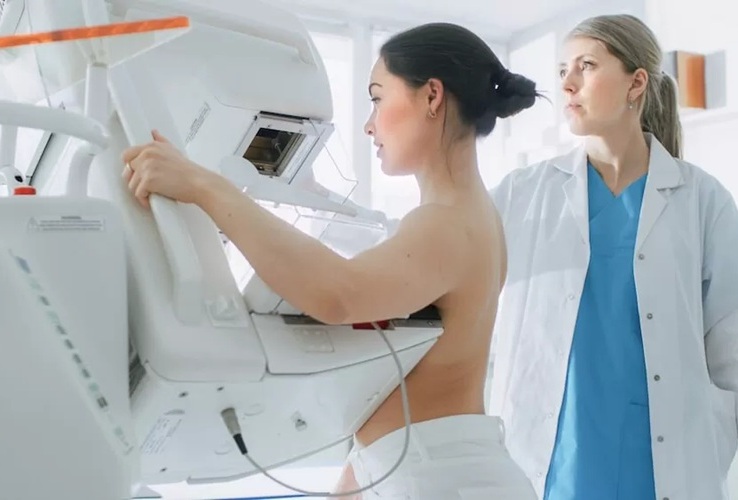
AI Improves Early Detection of Interval Breast Cancers
Interval breast cancers, which occur between routine screenings, are easier to treat when detected earlier. Early detection can reduce the need for aggressive treatments and improve the chances of better outcomes.... Read more
World's Largest Class Single Crystal Diamond Radiation Detector Opens New Possibilities for Diagnostic Imaging
Diamonds possess ideal physical properties for radiation detection, such as exceptional thermal and chemical stability along with a quick response time. Made of carbon with an atomic number of six, diamonds... Read moreMRI
view channel
New MRI Technique Reveals Hidden Heart Issues
Traditional exercise stress tests conducted within an MRI machine require patients to lie flat, a position that artificially improves heart function by increasing stroke volume due to gravity-driven blood... Read more
Shorter MRI Exam Effectively Detects Cancer in Dense Breasts
Women with extremely dense breasts face a higher risk of missed breast cancer diagnoses, as dense glandular and fibrous tissue can obscure tumors on mammograms. While breast MRI is recommended for supplemental... Read moreUltrasound
view channel
New Incision-Free Technique Halts Growth of Debilitating Brain Lesions
Cerebral cavernous malformations (CCMs), also known as cavernomas, are abnormal clusters of blood vessels that can grow in the brain, spinal cord, or other parts of the body. While most cases remain asymptomatic,... Read more.jpeg)
AI-Powered Lung Ultrasound Outperforms Human Experts in Tuberculosis Diagnosis
Despite global declines in tuberculosis (TB) rates in previous years, the incidence of TB rose by 4.6% from 2020 to 2023. Early screening and rapid diagnosis are essential elements of the World Health... Read moreNuclear Medicine
view channel
New Imaging Approach Could Reduce Need for Biopsies to Monitor Prostate Cancer
Prostate cancer is the second leading cause of cancer-related death among men in the United States. However, the majority of older men diagnosed with prostate cancer have slow-growing, low-risk forms of... Read more
Novel Radiolabeled Antibody Improves Diagnosis and Treatment of Solid Tumors
Interleukin-13 receptor α-2 (IL13Rα2) is a cell surface receptor commonly found in solid tumors such as glioblastoma, melanoma, and breast cancer. It is minimally expressed in normal tissues, making it... Read moreGeneral/Advanced Imaging
view channel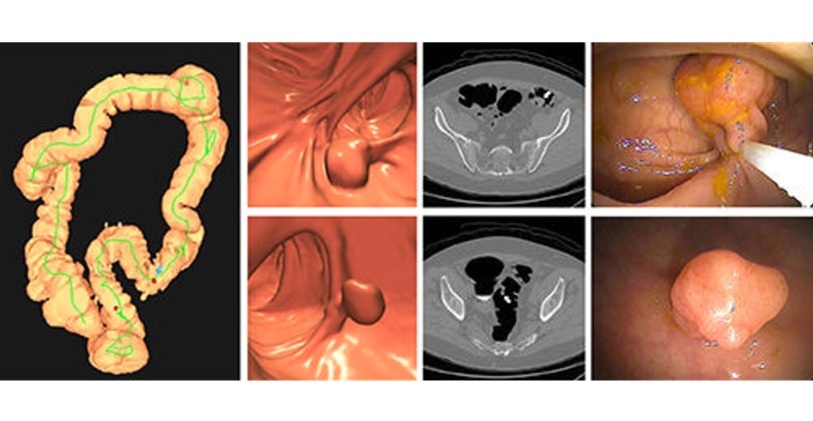
CT Colonography Beats Stool DNA Testing for Colon Cancer Screening
As colorectal cancer remains the second leading cause of cancer-related deaths worldwide, early detection through screening is vital to reduce advanced-stage treatments and associated costs.... Read more
First-Of-Its-Kind Wearable Device Offers Revolutionary Alternative to CT Scans
Currently, patients with conditions such as heart failure, pneumonia, or respiratory distress often require multiple imaging procedures that are intermittent, disruptive, and involve high levels of radiation.... Read more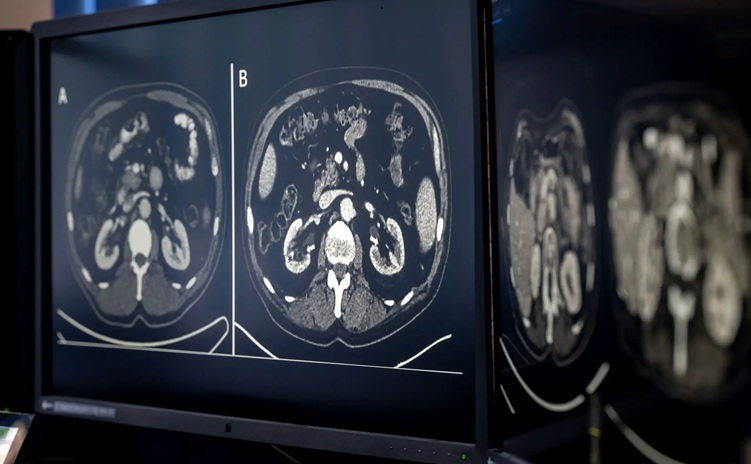
AI-Based CT Scan Analysis Predicts Early-Stage Kidney Damage Due to Cancer Treatments
Radioligand therapy, a form of targeted nuclear medicine, has recently gained attention for its potential in treating specific types of tumors. However, one of the potential side effects of this therapy... Read moreImaging IT
view channel
New Google Cloud Medical Imaging Suite Makes Imaging Healthcare Data More Accessible
Medical imaging is a critical tool used to diagnose patients, and there are billions of medical images scanned globally each year. Imaging data accounts for about 90% of all healthcare data1 and, until... Read more













